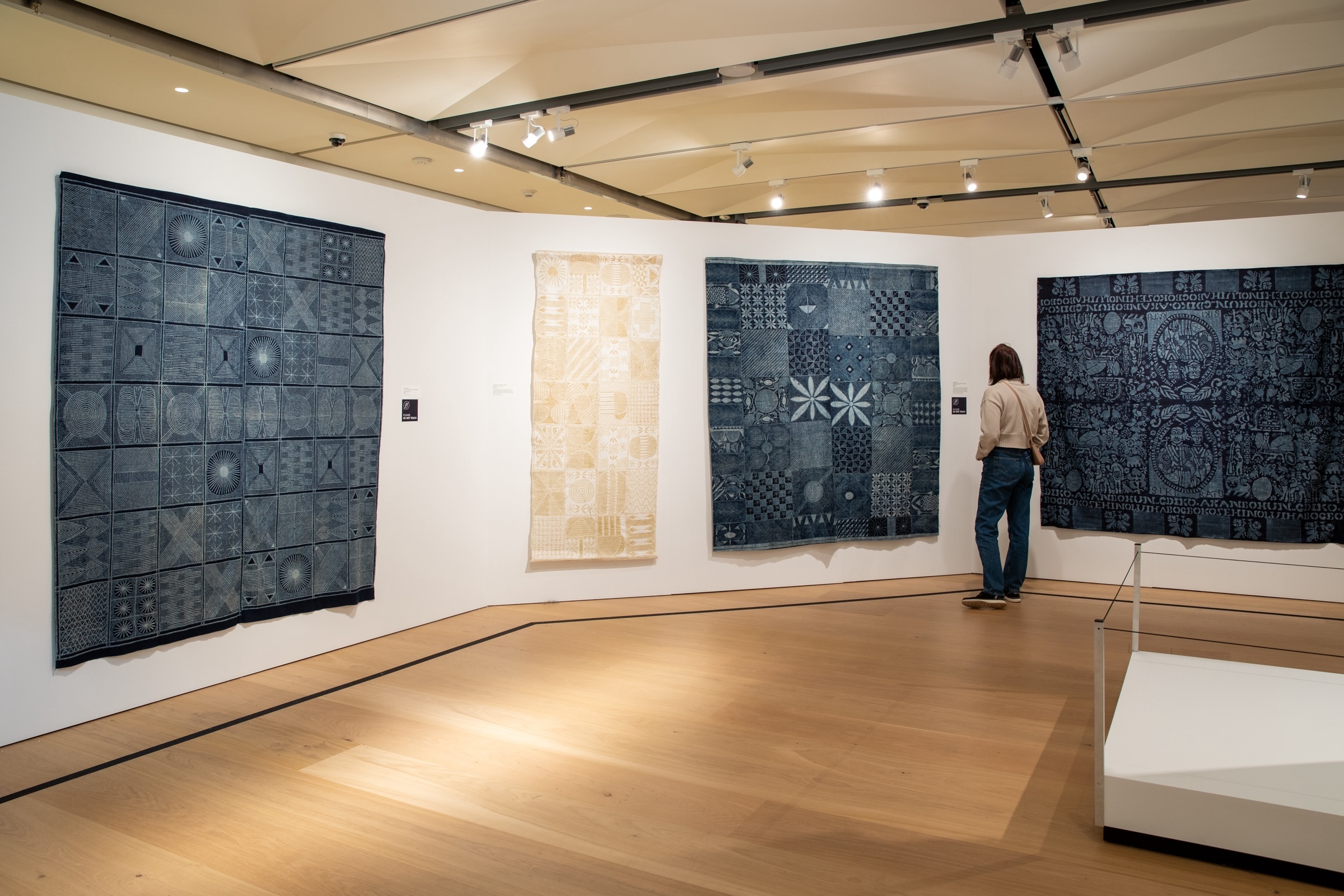
Various cultures embrace a diversity of dyeing techniques, from showcasing the mastery of evenly dyed cloth to creating intricate contrasting patterns using techniques known as resist. Areas of resist (where the dye is blocked from contact with the cloth) can be achieved using materials like wax, such as in Indonesian batik, or starchy root paste used in Nigerian adire. Others utilize complex stitching, tied string, rubber bands, and clamped wood blocks as seen in Japanese shibori. Dyers will also tie off sections of yarn in strategic ways, creating resist lines along the length of the yarn. The alternating-colored yarn is then woven into patterned textiles called ikat. The possibilities are endless as dyers combine indigo with other dyes and materials to achieve different hues, saturations, and sheens.
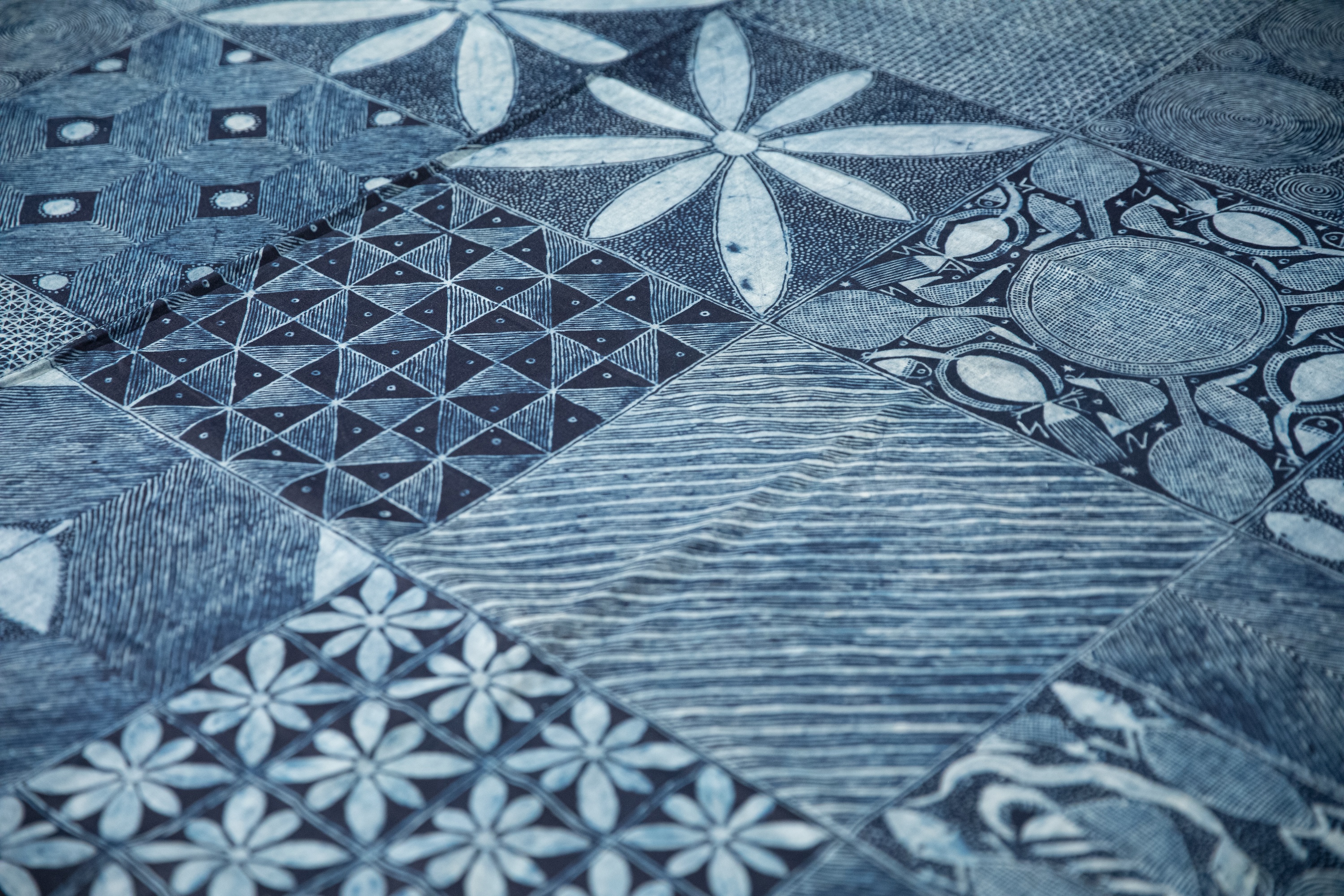
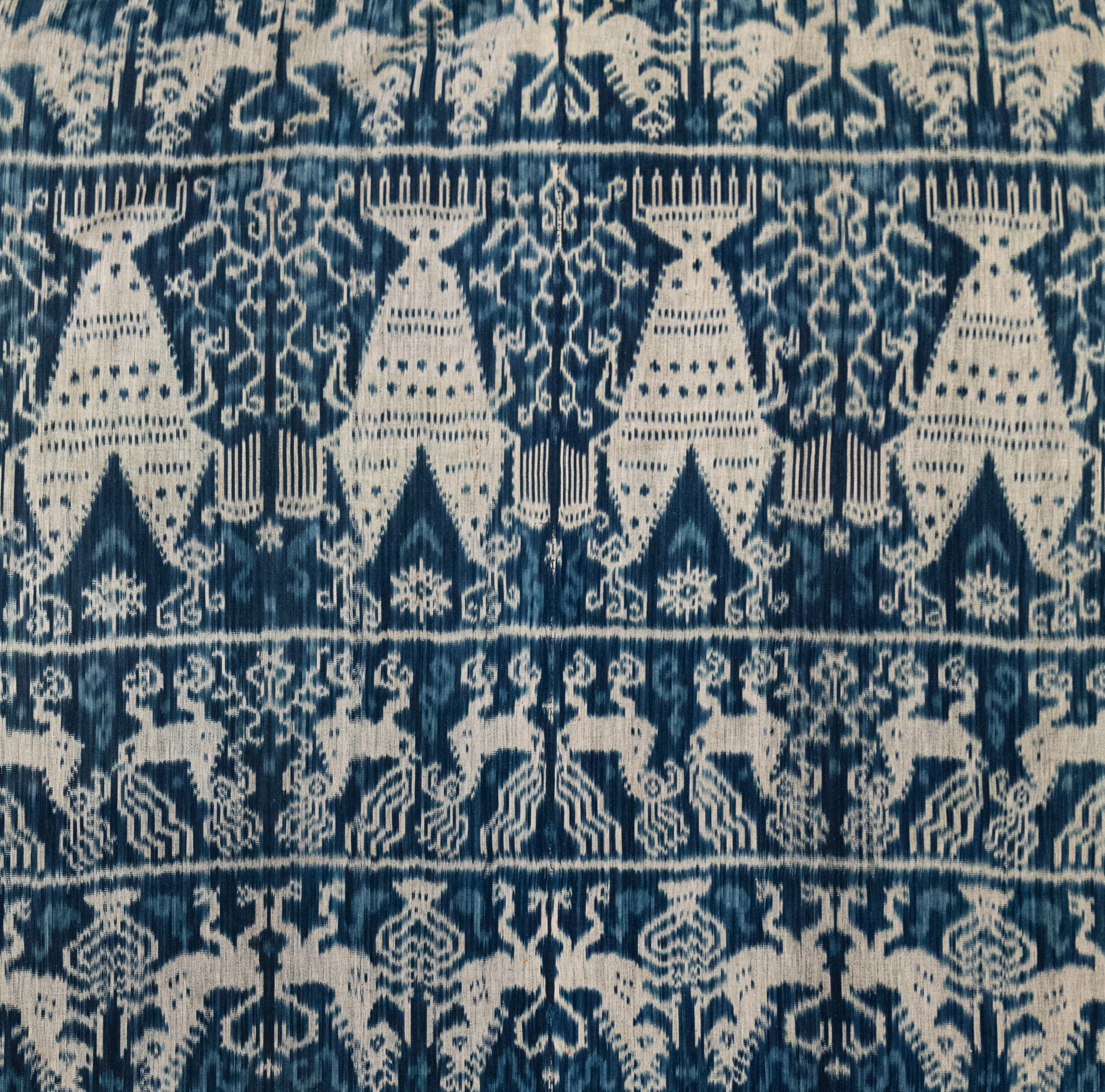
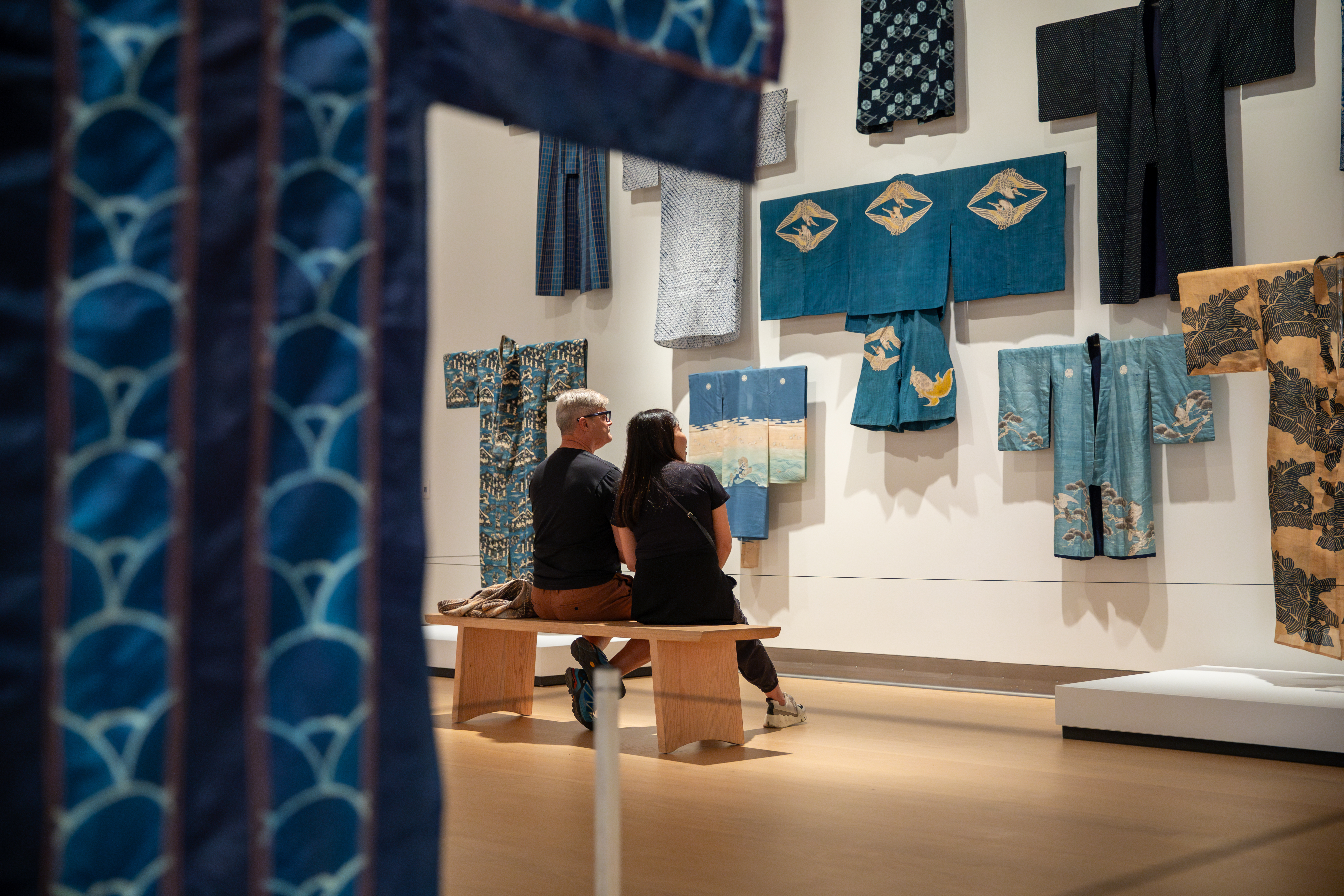
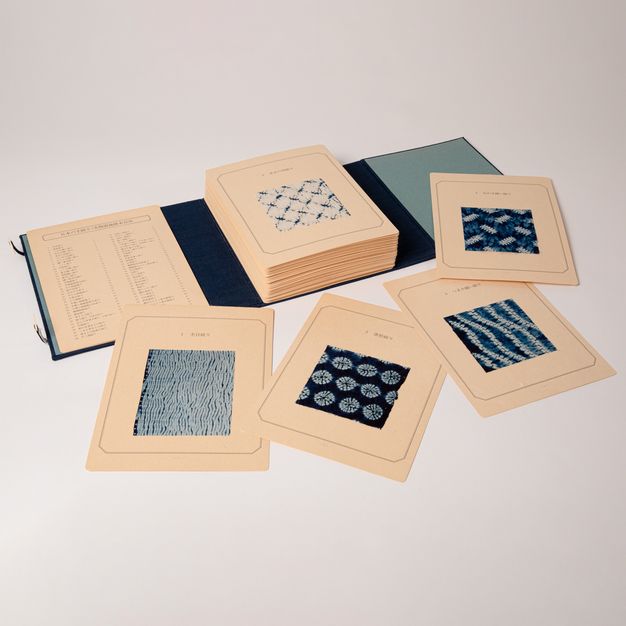

Header image - Unidentified Maker, Embroidery Panel (detail), 17th–18th century, Greece. Linen, silk, 15 x 28 in. 38.1 x 71.12 cm. Cotsen Textile Traces Study Collection, T-1155, courtesy of The George Washington University, Washington D.C. Photograph by Bruce M. White.